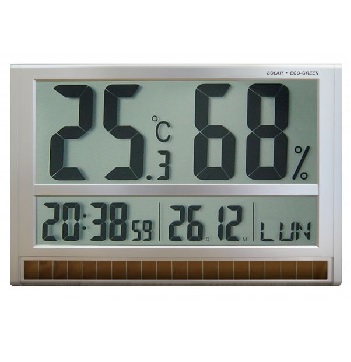
What is hygrometry?
The hygrometry gives an indication of the quality of the air. This measurement makes it possible to know the quantity of water in gaseous form, and therefore the level of humidity present in the air of a room. Usually this rate is between 45 and 65%. Three values can vary this data: ambient humidity, pressure and temperature. Measuring the hygrometry of the aquatic room is essential to be able to effectively combat condensation in indoor swimming pools.

What is the acceptable humidity level for the swimming pool room?
In a living room, the humidity content of the air should be between 30 and 60%. But for the swimming pool hall, the rate must be maintained between 60 and 70%. A rate of 50% and water evaporation intensifies; a rate above 80% and it is condensation which becomes very important.
Too much humidity: what are the consequences?
If no means are put in place to combat the natural humidity of the swimming pool room, the hygrometry rate will be much higher than the standard, the quality of life and comfort of bathers is affected, damage to the building appear, stains of humidity, mold, saltpeter, etc. equipment is damaged prematurely, and bad odors “intrude”.
Why know the humidity level?
For an indoor swimming pool, all the measures are studied, taken and applied to respect the right humidity level, from its design. But for covered swimming pools or spa rooms, humidity is not always taken into consideration. So before taking action, it is better to check the actual humidity level.
If knowing the humidity level does not provide immediate solutions, the result makes it possible to implement the options that will provide better comfort for swimmers and preserve and perpetuate the aquatic area.
What are the causes of high humidity in an indoor pool?
The high temperature of the room favors the evaporation of water, considerably increasing the ambient humidity. A poorly ventilated pool room or enclosure generally creates a high level of humidity. To eliminate excess water vapour, the renewal of the air in the room is an essential factor.
A large temperature difference between the air and the water increases the rate of evaporation, therefore condensation.
In the aquatic space, it is understood that the main source of humidity is the pool. However, it is possible to limit water evaporation by covering the pool when not in use.
Insulation also plays an important role. If the pool room is little, poorly or not insulated, the hot air in the room will encounter, through the windows, walls, ceilings... surfaces in contact with the cold air from outside. This will inevitably create condensation.
How to limit the humidity level?
Depending on the configuration of the indoor pool and its characteristics, multiple solutions are possible to limit the humidity level of the indoor pool: thermal insulation, covering the pool, ventilating the pool shelter, installing a dehumidifier, a VMC or both, heat the air, and the water with a heat pump...
The measurement of the humidity of the indoor pool can be done as part of a heat balance. In this case, the professional gives the solutions best suited to the situation. But it is possible to obtain a hygrometer to know the humidity content of the air of the aquatic room and improve the quality of comfort and the protection of property.
Knowing how condensation is created in the pool room is essential to fully understand this phenomenon of condensation in the pool room and thus be able to reduce the effects of condensation in the aquatic space.